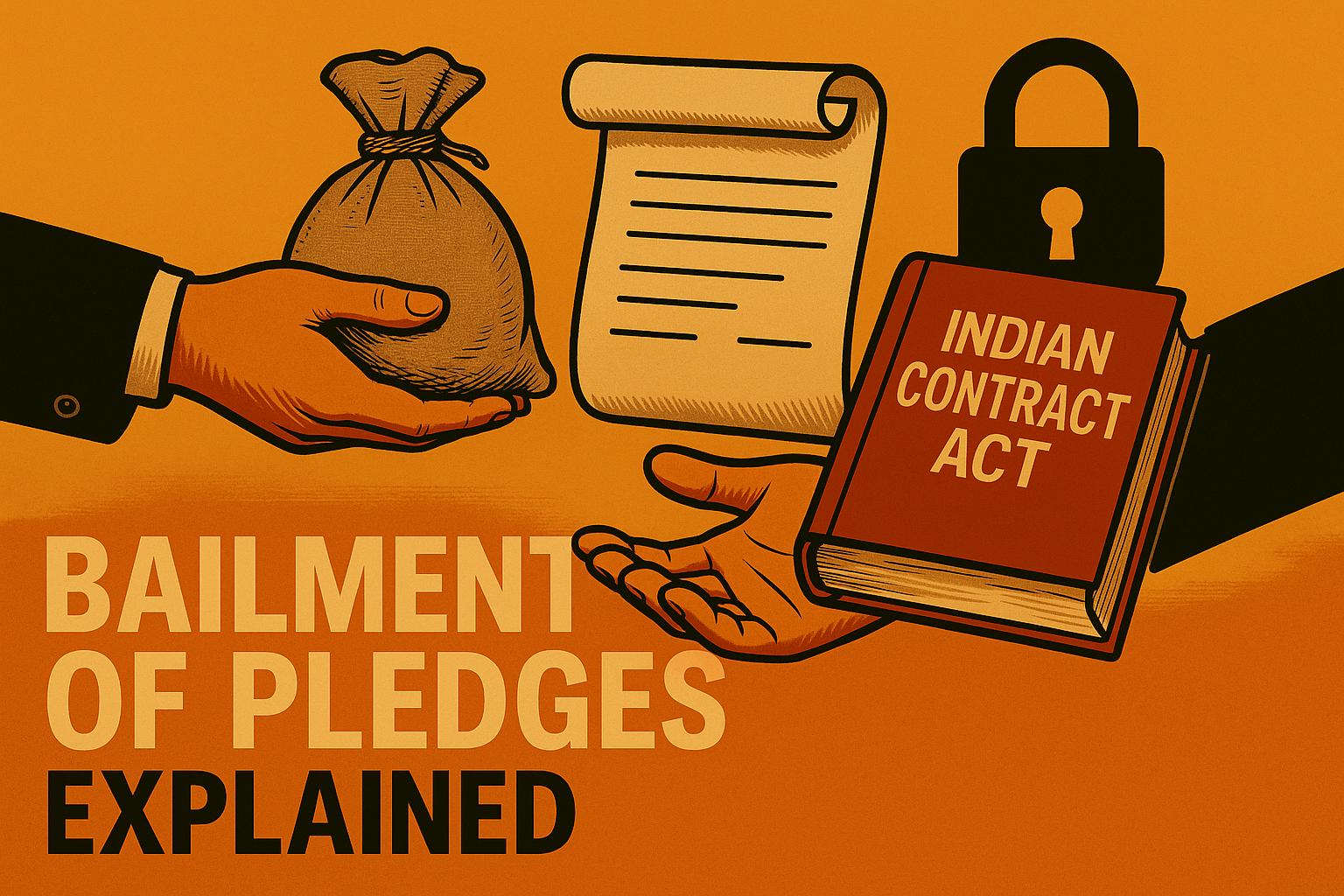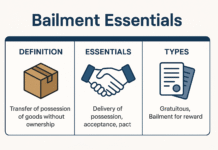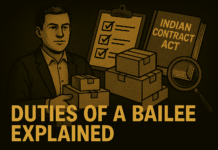Understanding Bailment of Pledges: A Simple Guide
In the realm of contracts, particularly when dealing with securing debts or promises, the concept of a bailment of pledge, often simply referred to as a pledge or pawn, plays a crucial role.1 Let’s break down what this means.
What is a Bailment of Pledge?
According to Section 172 of the Indian Contract Act, a bailment of goods as security for the payment of a debt or the performance of a promise is called a ‘pledge’.2
Think of it this way: you hand over something valuable to someone as a guarantee that you will repay a loan or fulfill an obligation.
In this arrangement:
- The person who gives the goods as security is called the pawnor.
- The person who receives the goods as security is called the pawnee.3
It’s important to note that all pledges are a type of bailment, but not all bailments are pledges. A pledge has the specific purpose of acting as security.4 Because of this security aspect, the law grants the pawnee more rights than a regular bailee.
A pledge is created when goods or chattels are delivered to another to act as security for money borrowed by the bailor.5
What Can Be Pledged?
Generally, a pledge involves movable goods and chattels that can be physically or constructively delivered.6 However, things that cannot be sold, like money itself, cannot be pledged. Negotiable instruments and documents representing goods (like a Railway Receipt) can also be the subject of a pledge. Pledging the documents of title effectively amounts to pledging the goods themselves. Even a share certificate can be pledged through its delivery.7
Essential Elements of a Valid Pledge
For a pledge to be legally valid, two key elements must be present:
- Delivery of Possession: The pawnor must deliver the possession of the goods to the pawnee.8 This delivery can be either actual (physical handover) or constructive.
- Constructive Delivery: This occurs when there’s no physical transfer, but something is done that puts the goods under the pawnee’s control. The case of Reeves V. Capper, 1938 illustrates this. Here, a ship captain pledged his chronometer to the shipowner but continued using it during a voyage. The court held the initial pledge valid due to constructive delivery.
- Pledging documents of title, like a Railway Receipt, also constitutes constructive delivery of the goods represented by the document. In the Morvi Mercantile Bank Ltd. Vs. Union of India, A.I.R. 1965 case, the Supreme Court affirmed that a bank holding a Railway Receipt as security (pledge) had the same rights as the owner of the goods and could sue for their full value even if the loan amount was less.9
- Pawnee’s Right to Retain the Goods: The pawnee has the right to keep the pledged goods until the debt is fully repaid or the promise is fulfilled.10 It’s crucial to understand that the pawnee only gets a special property in the pledged goods. The general property (ownership) remains with the pawnor. Once the debt is satisfied, the purpose of the pledge is over, and the pawnee is obligated to return the goods to the pawnor.11 A pledge, therefore, acts as a security where goods are deposited under a contract for a debt.12 The pledgee’s right over the property is limited to securing the debt.
Distinguishing Pledge, Lien, and Hypothecation
While all three concepts relate to securing an obligation with property, they differ in significant ways:
| Feature | Pledge | Lien | Hypothecation |
| Possession | Goods are delivered to the pawnee. | Right to retain possession until the claim is satisfied. | Possession remains with the borrower. |
| Nature of Right | Pawnee gets a special property and the right to sell under certain conditions. | Lien holder has the right to retain possession but generally not to sell. | Hypothecatee has a charge against the property but no possession initially. |
| Actionability | Pledgee has the right to sue and to sell the goods under certain conditions. | Lien is generally a passive right; no right to sue or sell (usually). | Hypothecatee has the right to sue for recovery and can seize/sell assets through legal processes. |
| Creation | Created by contract. | Mostly created by law, sometimes by contract. | Created by contract. |
In essence:
- Pledge: Involves the delivery of goods for security, granting the pawnee certain rights over them.13
- Lien: Is the right to retain possession of goods until a debt is paid, generally without the right to sell.14
- Hypothecation: Creates a charge on property without the transfer of possession.15
Understanding these distinctions is vital in various commercial and legal contexts.
















